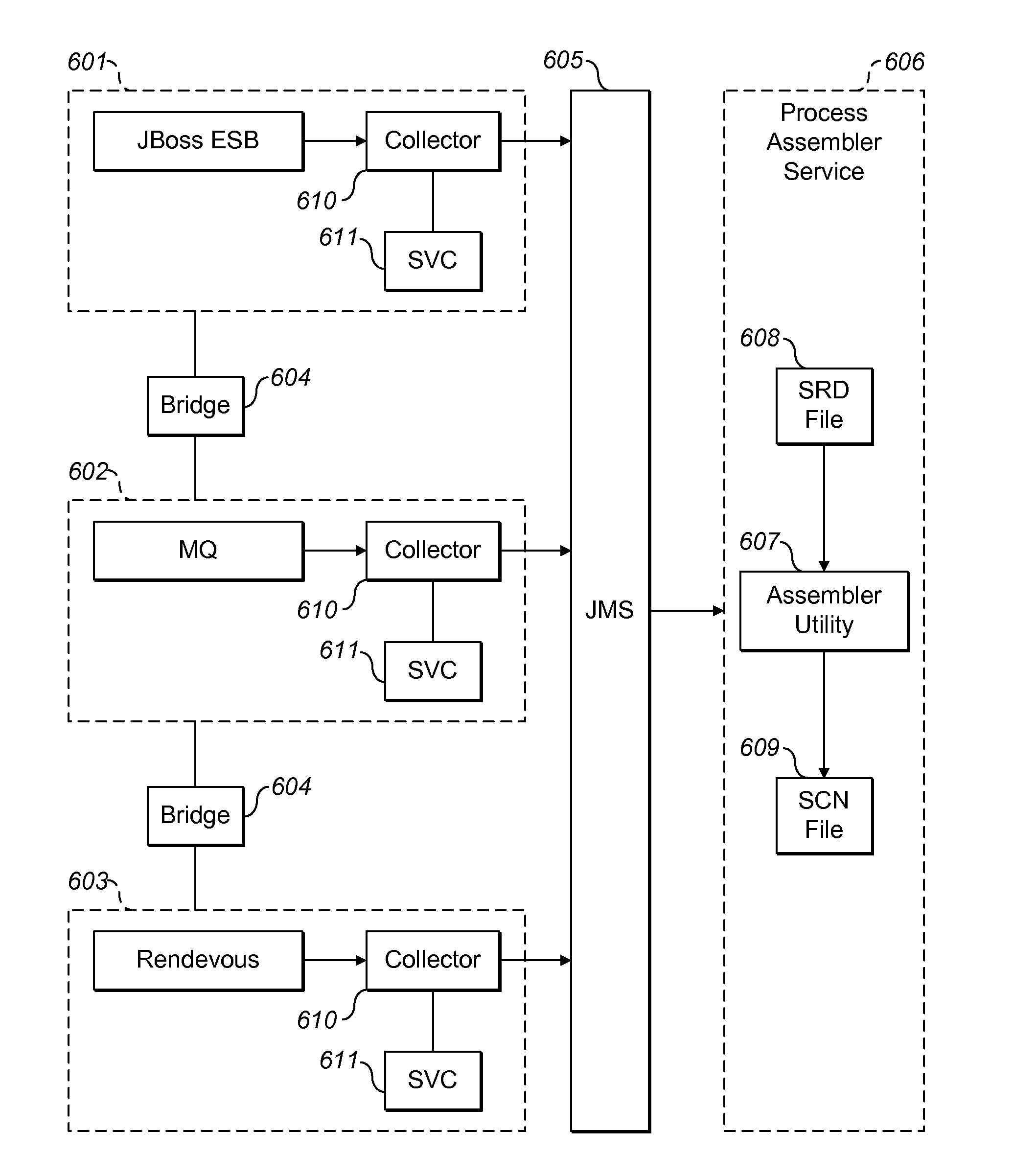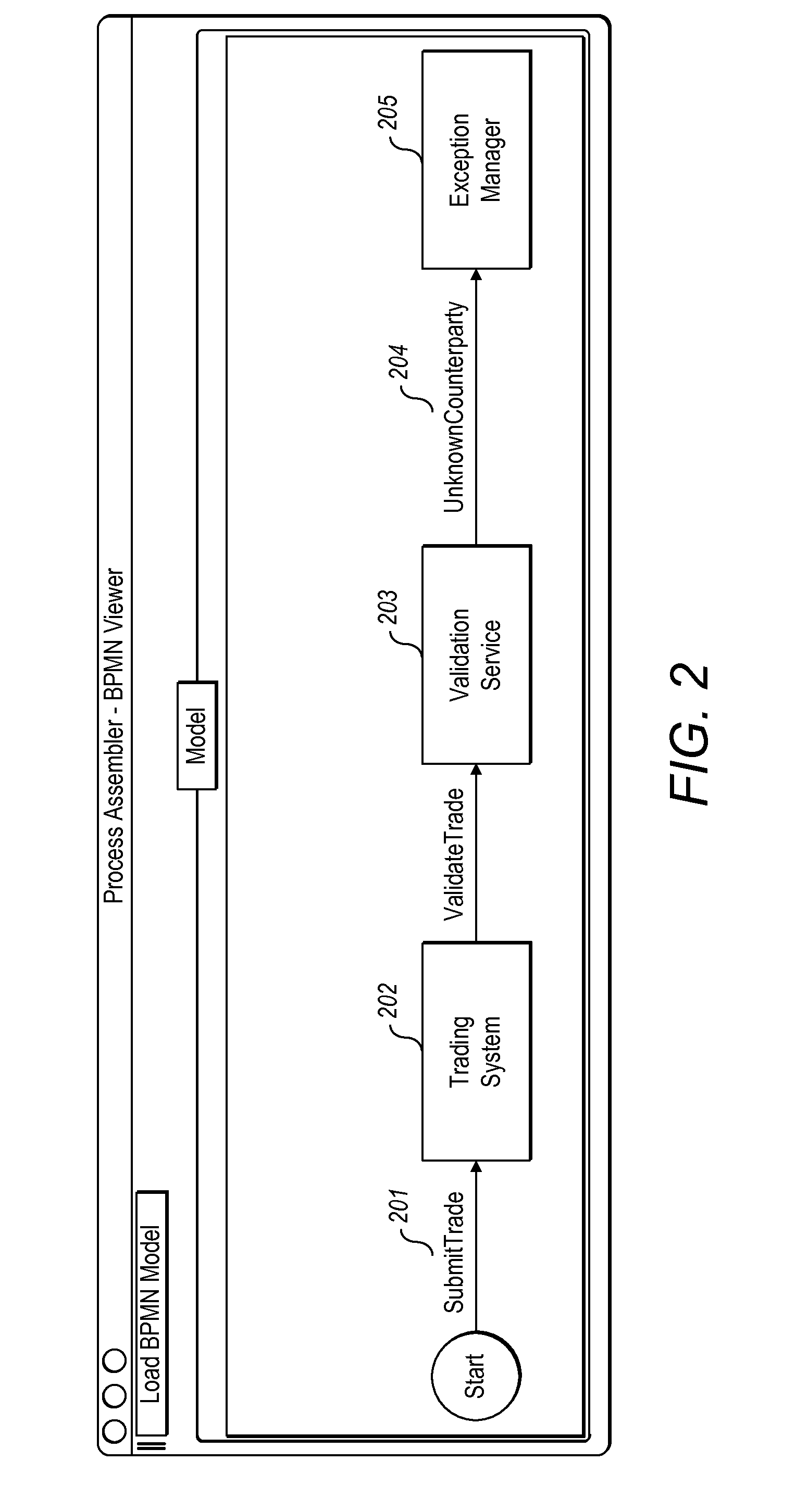Automated process assembler
a process assembly and automatic technology, applied in the field of automatic process assembly, can solve the problems of loss of process visibility, inability to keep up with the implementation of changes, and inability to document the changes,
- Summary
- Abstract
- Description
- Claims
- Application Information
AI Technical Summary
Benefits of technology
Problems solved by technology
Method used
Image
Examples
Embodiment Construction
[0090]Before discussing the operation of the present invention in detail, we first review some alternative approaches that have been considered for addressing problems similar to those solved by the present invention. In the paper “Automating Process Discovery through Event-Data Analysis”, Proceedings of the 17th Conference on Software Engineering (1995), the authors (Cook and Wolf) considered three possible approaches for inferring a process description from a set of test data. We briefly review these three approaches, and the following definitions for certain terms should be born in mind: an Event is a single action resulting in a change of state; an Event stream is a sequence of events; and a State machine is a flow chart detailing current state, transitions that cause state change, and the resulting state.
The RNET Method
[0091]This first approach considered by Cook and Wolf is the Recurrent Neural Network (or RNet) method, a technique based on a low-level view of a biological neu...
PUM
 Login to View More
Login to View More Abstract
Description
Claims
Application Information
 Login to View More
Login to View More - R&D
- Intellectual Property
- Life Sciences
- Materials
- Tech Scout
- Unparalleled Data Quality
- Higher Quality Content
- 60% Fewer Hallucinations
Browse by: Latest US Patents, China's latest patents, Technical Efficacy Thesaurus, Application Domain, Technology Topic, Popular Technical Reports.
© 2025 PatSnap. All rights reserved.Legal|Privacy policy|Modern Slavery Act Transparency Statement|Sitemap|About US| Contact US: help@patsnap.com



